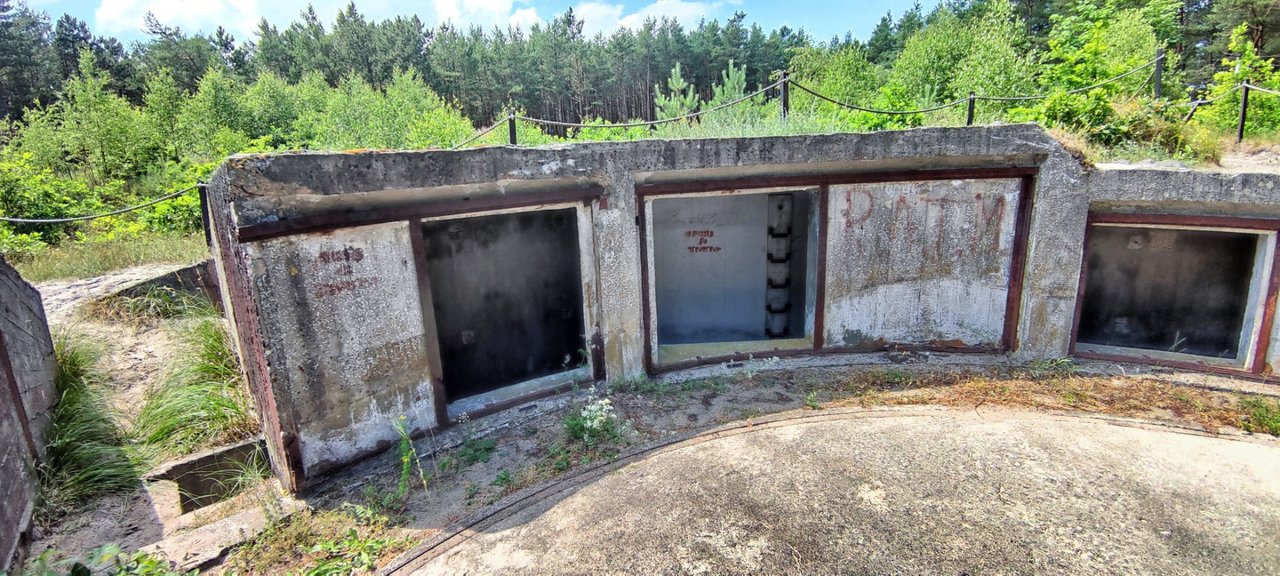Just drive off, right into the somewhere. Just not to the German Baltic Sea, which is as full as a soccer stadium on the German coast. We get into the car and set course north. We want to go to Poland, a country we last visited many years ago. What adventures are waiting there? We will experience it.
You can read the first part here
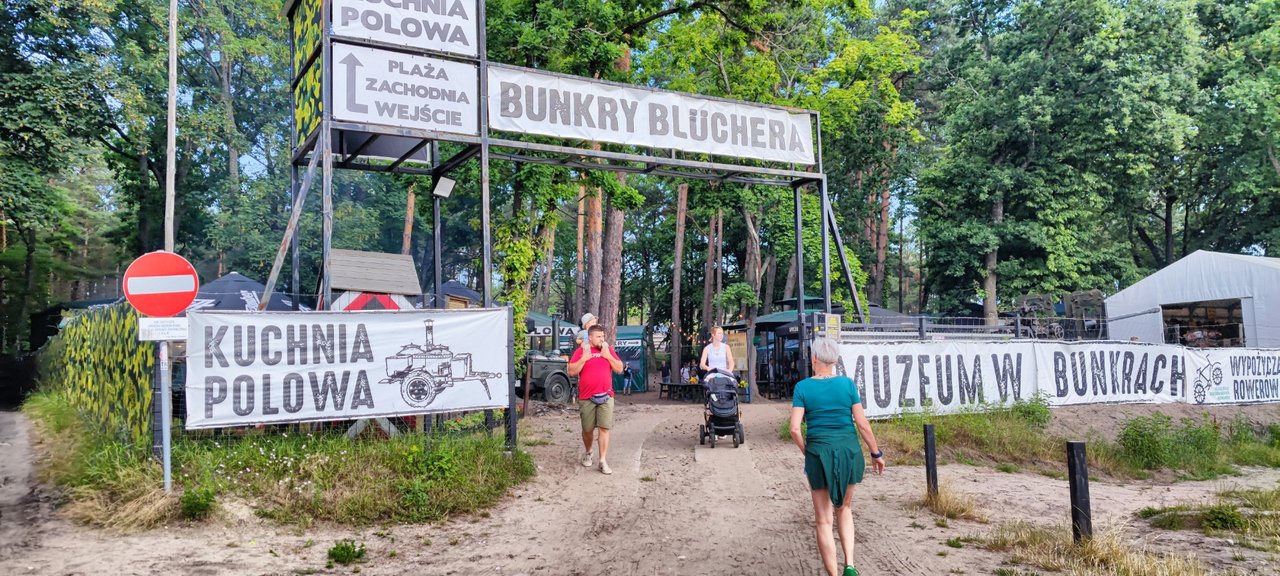 Bunkry Blüchera
Bunkry Blüchera
Yesterday we had beach and sun, nature and lots and lots of people. But today we want to travel into history, deep underground, far back into a time that left terrible wounds here. To do this we drive to Ustka, a small town formerly known as Stolpmünde.
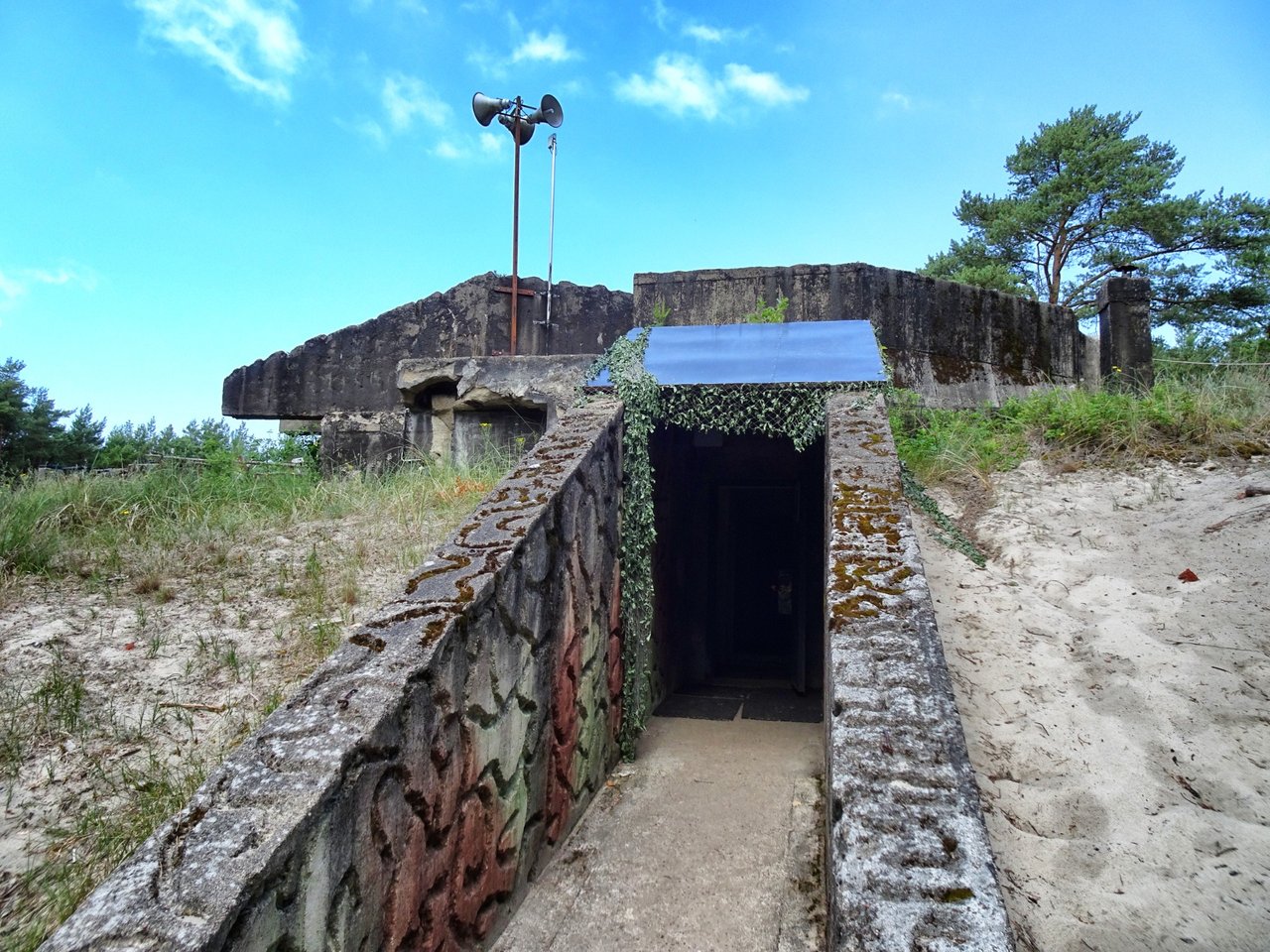 The way to the underground
The way to the underground
Here, right next to a small, very busy port, there were already some military installations in the 19th century, directly on the western bank of the Slupia, as the river Stolpe is called in Polish. But impressive are the real remains of the Stolpmünde Fortress from the 20th century: a bunker landscape in the sand, 12 meters above sea level in the dunes over the Baltic Sea.
Deep in the underground
This is the Blücher bunker, which consists of a tangle of underground structures that can be visited and explored thanks to the efforts of the dedicated Kolberg amateur historian Marcin Barnowski and the Historical Research Society “Gryf” from Słupsk.
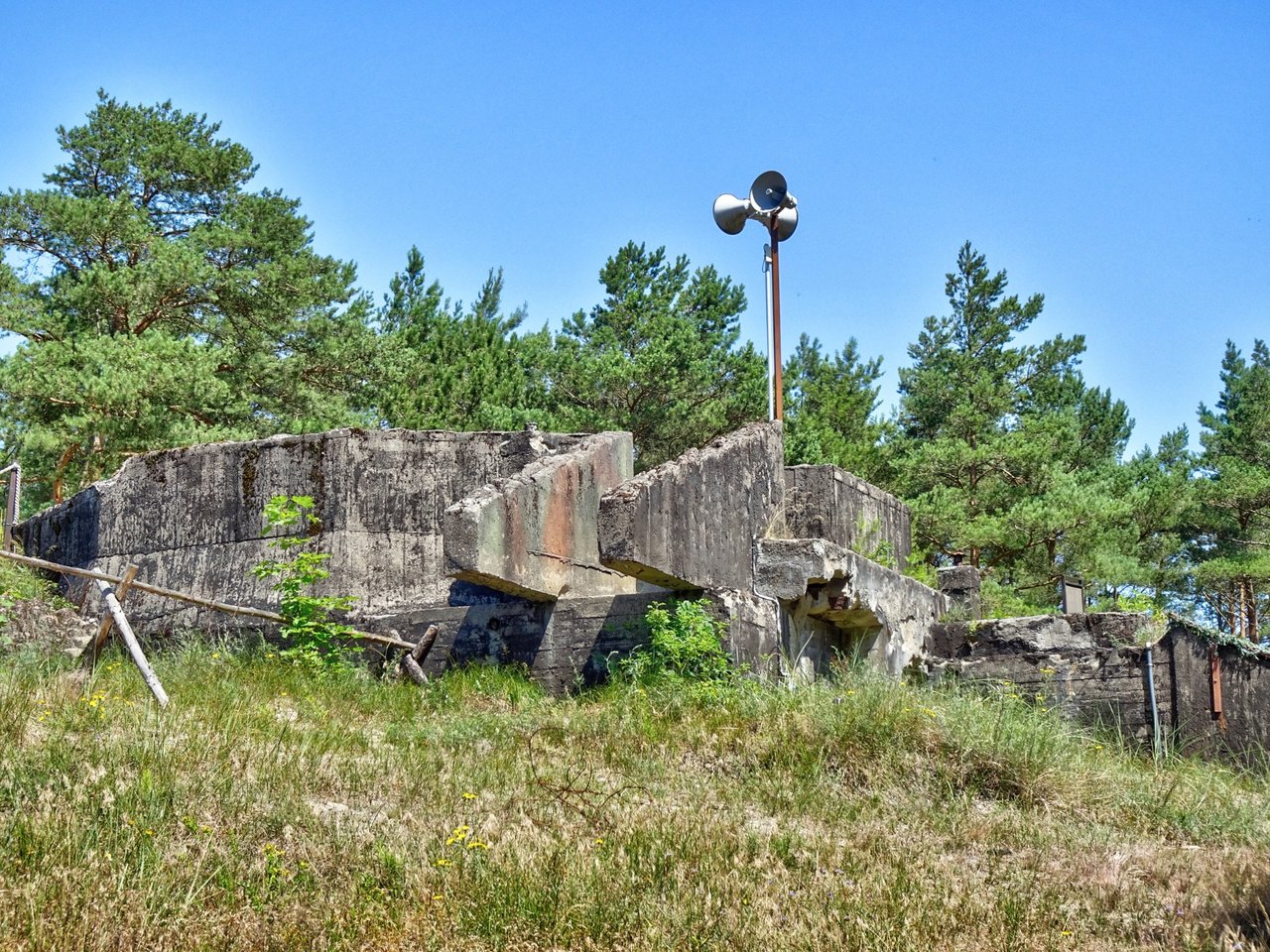 The concrete walls are giants
The concrete walls are giants
Barnowski has built an entire amusement park on the ruins of the old fortress, which was used by Germans, Russians and Poles: There are sausages and tanks, shooting ranges and beer, an exhibition and a well-stocked shop for all kinds of outdoor equipment. A few of people are here, the shoot with paintball guns and bows, they#re drinking beer and eating Kiełbasa, a special polish sausage.
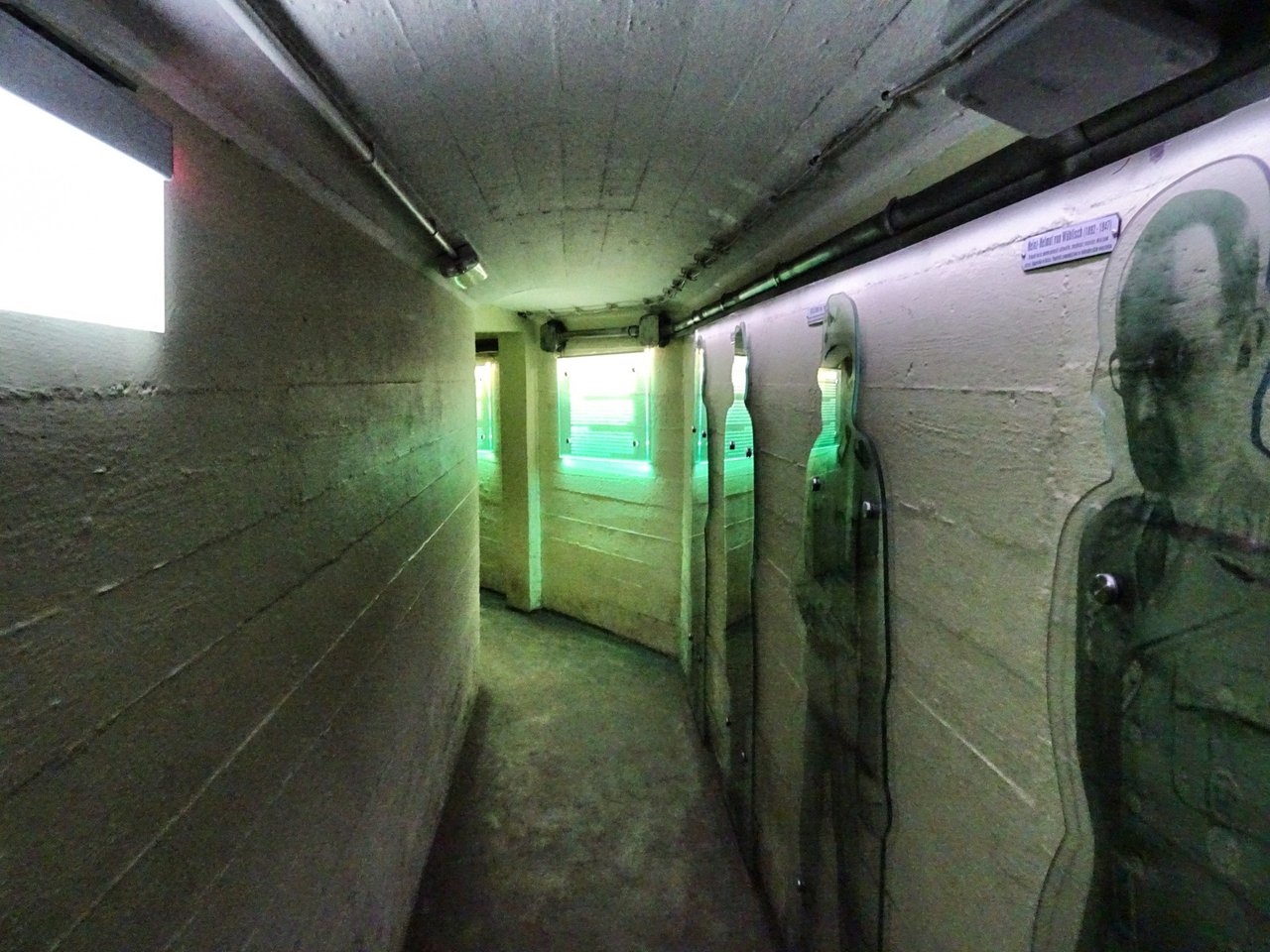 Under 4 meters of concrete
Under 4 meters of concrete
A very new situation for every old tree around. In the past the area was always a restricted area. The German army occupied the area as early as the 19th century. Late, just before the Second World War, barracks and a training area for anti-aircraft guns were built in the deserted dune landscape that stretches as far as Rügenwalde (polish Darłowo).
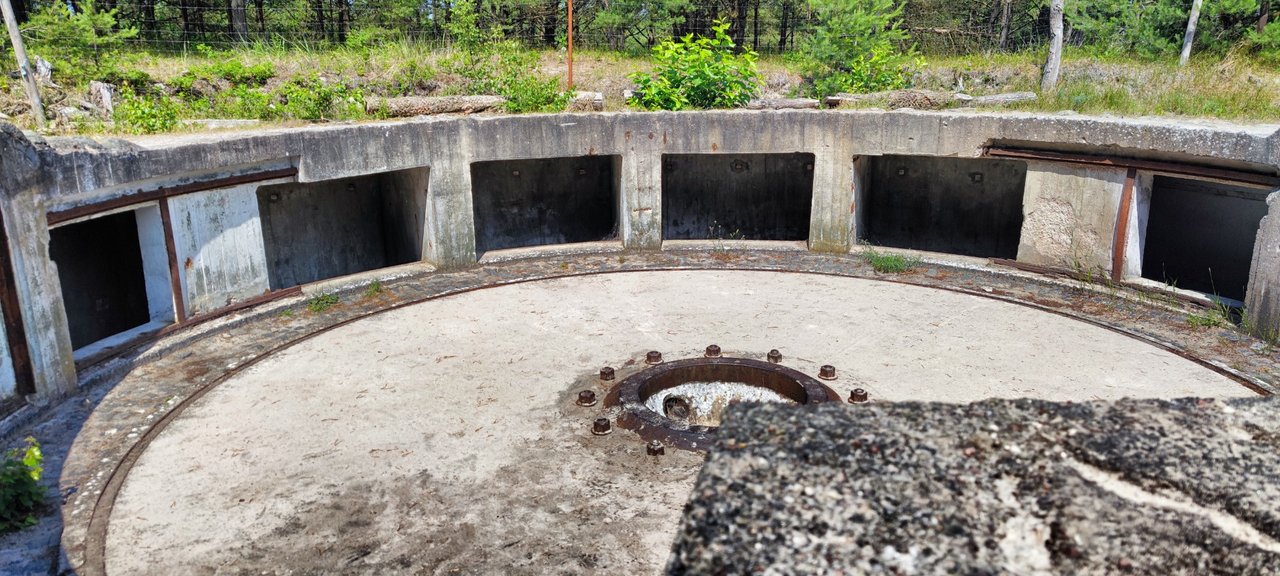 The place where on of the cannons was
The place where on of the cannons was
Destroy all the beauty
A bathing facility for men that used to be here had to go. For this, the Germans brought anti-aircraft and coastal guns here, as well as a radio measuring station, which they named Blücher in the name of Napoleon's conqueror. The knew exactly what they could do on a wonderful beach with white sands and blue waves. Destroy the beauty.
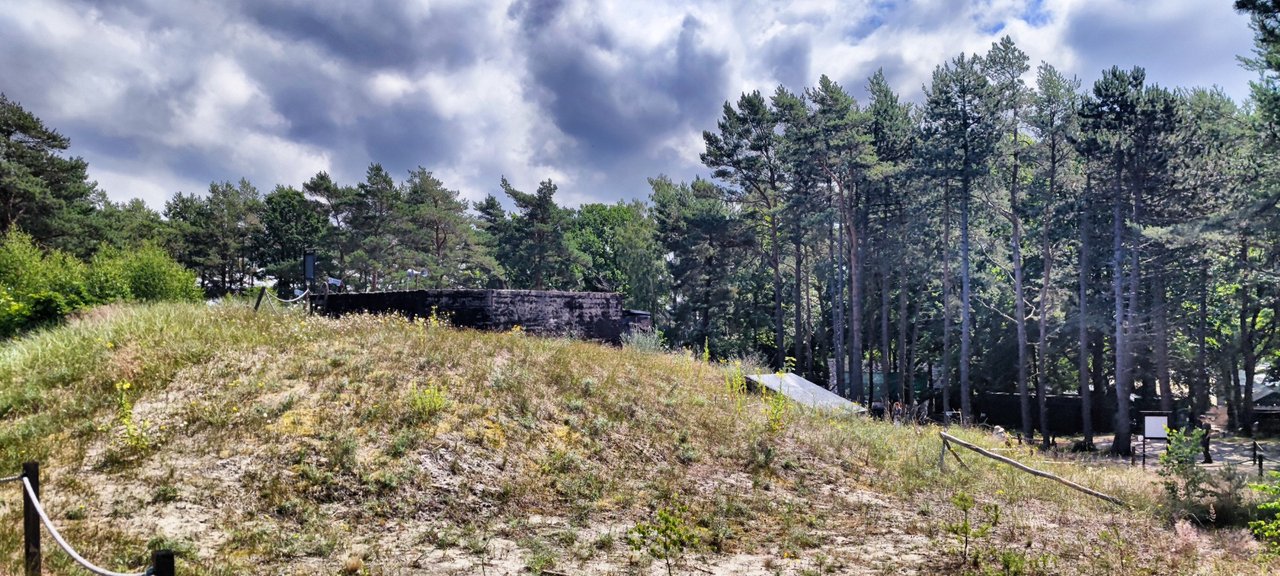 Behind the trees are the Baltic Sea
Behind the trees are the Baltic Sea
Four gun bunkers, the fire control center and a machine room with a power generator have been preserved here to this day. The historical park called “Ustka Fortress” let us dive under the surface. In the underground bunkers, which can be visited with a multilingual audio guide, realistic depictions of the lives of German soldiers are shown.
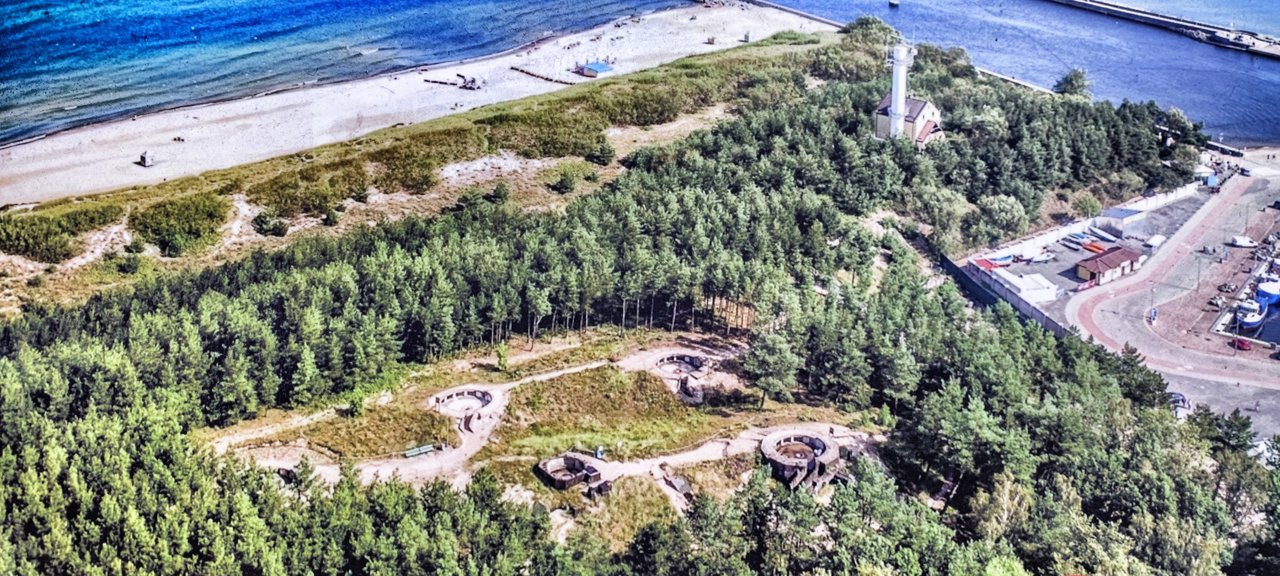 You can see it from above
You can see it from above
How they lived huddled together, what their housing looked like and how they spent their free time buried under four meters of concrete.
Landscape of horror
The military has turned the idyll into a landscape of horrors. Where the city plan of Ustka from 1709 still shows an unwooded dune landscape, reinforced concrete was poured into the sand for months. The "Herrenbad", a bathing beach built on stilts and connected to the beach by a wooden walkway, had to go. The gentlemen had to join the ladies: no more bathing!
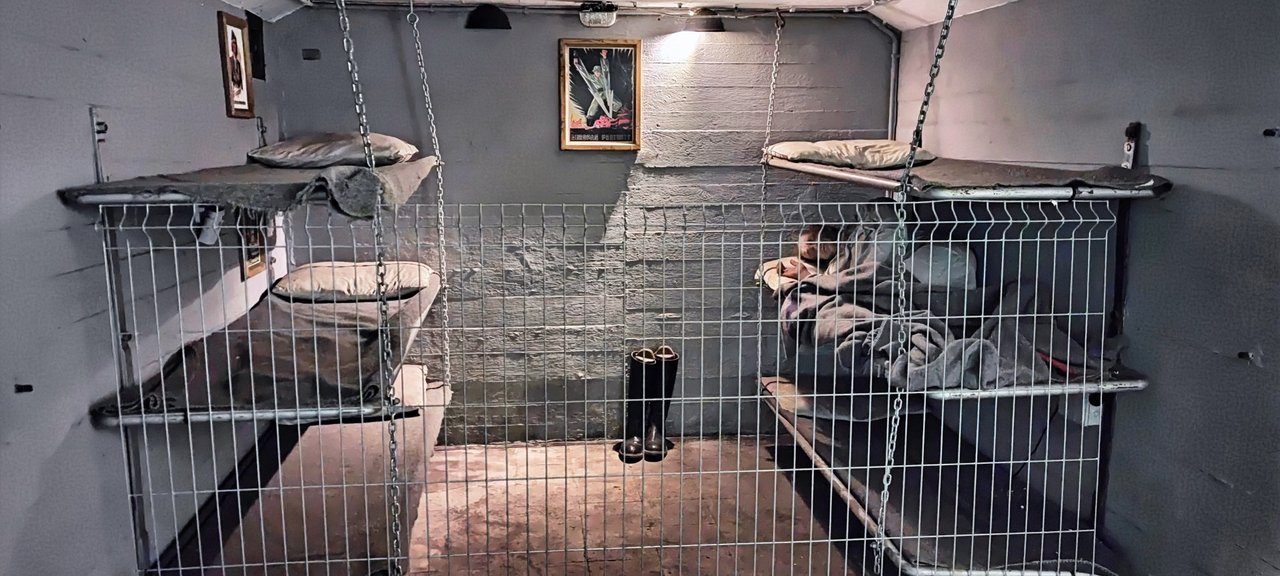 The cabin of four german soldiers
The cabin of four german soldiers
In 1937 the site was also closed to tourist traffic. A communications center was built in the small port, through which long-distance traffic between East Prussia and Berlin ran. The Germans planned to develop Stolpmünde into a powerful port, which the bunkered anti-aircraft and barrage battery would protect. If these plans had been implemented, Stolpmünde would have become a closed military facility. A castle on the beach, huge like a nightmare.
On the Pomeranian Wall
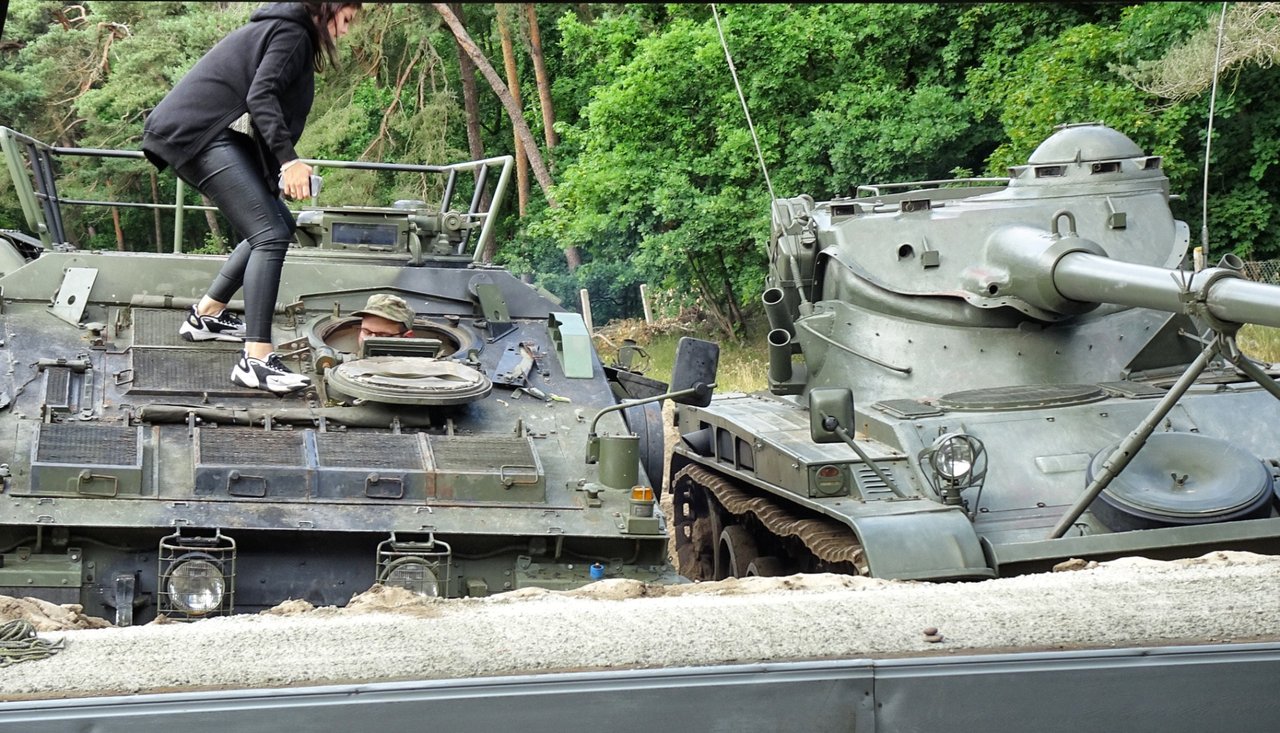 Polish people are common with tanks, it seems
Polish people are common with tanks, it seems
It didn't happen because the events of the war overtook the planners of the so-called "Pomeranian Wall". So the work was stopped, before the buildings were completed. What can be seen today is what was finished before the cannons were removed to be used where they were dug. Cruel enough. The brain of the battery is a small space next to the range finder. Path, speed and other parameters for targets such as enemy warships or aircraft were determined in both rooms.
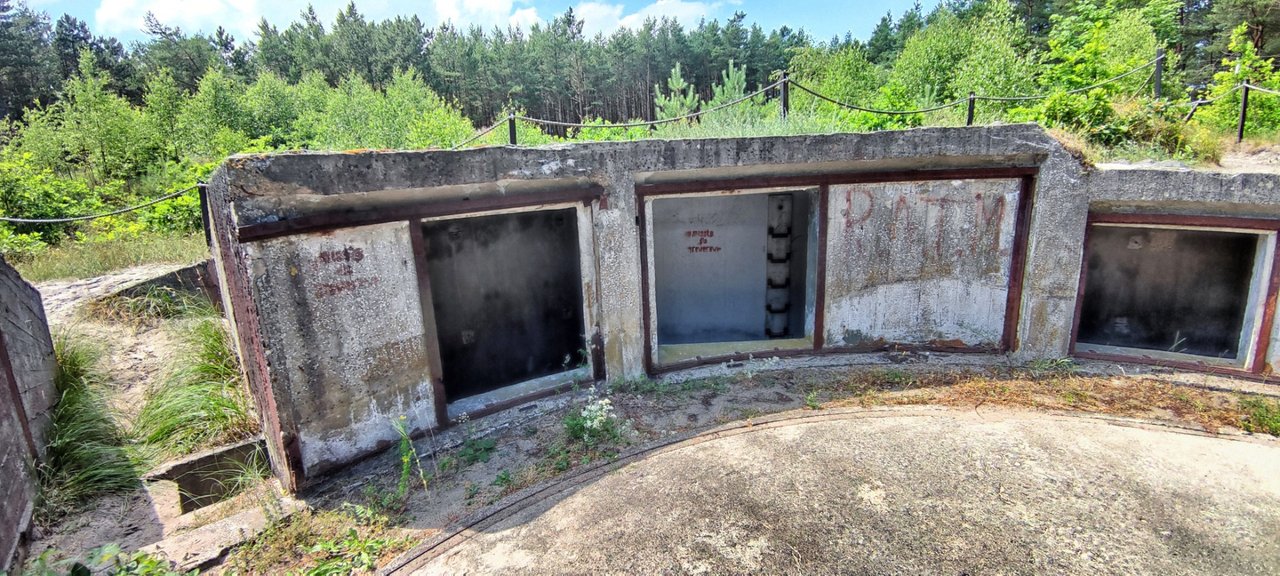 The doors in the middle are the way to the ammunition
The doors in the middle are the way to the ammunition
A dozen soldiers were always on duty to man the anti-aircraft battery with the 105 mm guns. The crew consisted of around 50 soldiers, mostly older reservists, who must have been horrified when the order came to give up the half-finished facility and go to the front to die.
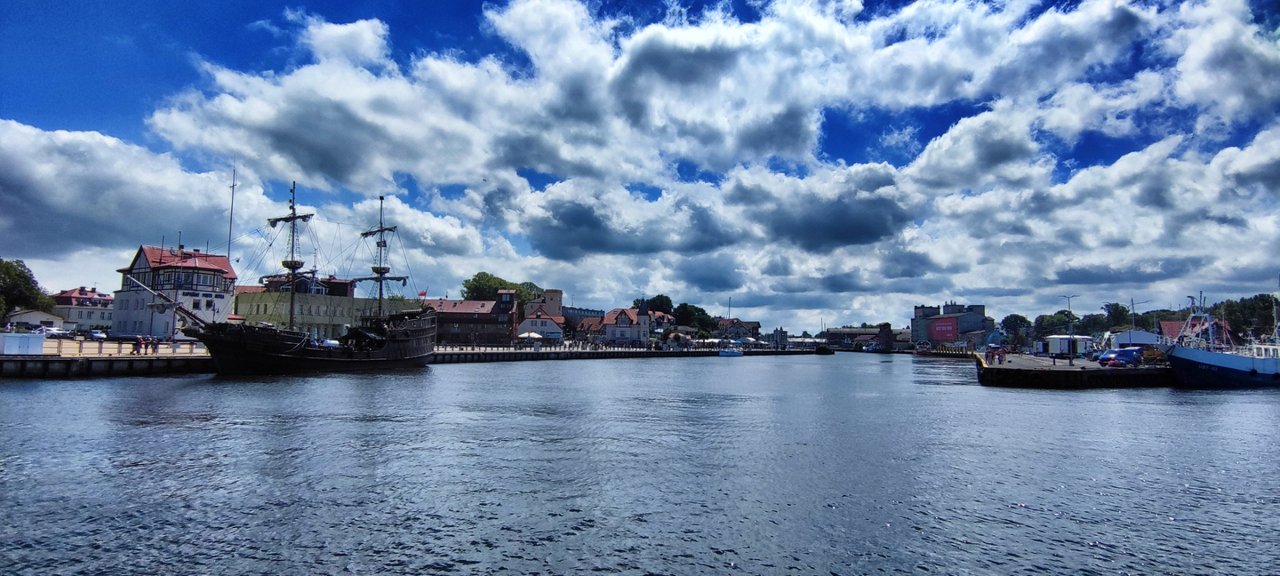 The harbor of Ustka, formerly known as Stolpmünde,
The harbor of Ustka, formerly known as Stolpmünde,
No fear about the "Führer"
Today it's all a somber memory, reinforced by the easy-going Polish way of also offering rides in real tanks - from England - around the facility and letting kids shoot paint-ball guns. In an ammunition case growing colorful flowers. The Nazi-cross of concrete on a wall, handmade by a heavy fan of the "Führer", is still to see. Polish people are not in fear for this symbol anymore.
Thank you for reading and if you like my work please follow me on Hive, Travelfeed or Steem or visit my homepage koenau.de
A few more pictures for you:
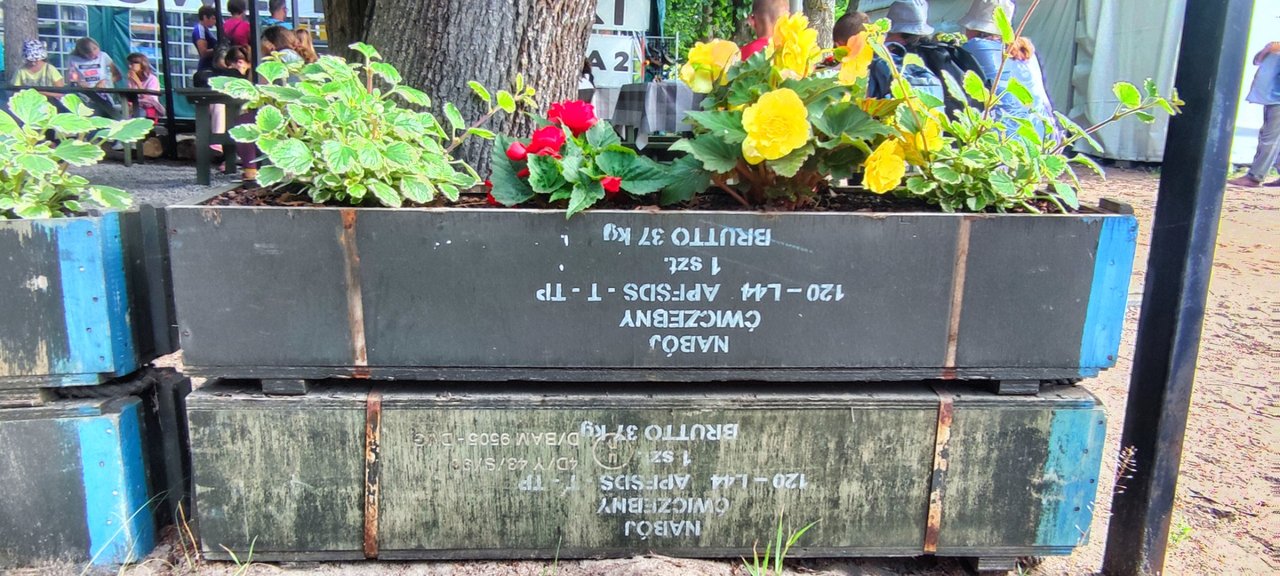 Flowers in the dirt (Paul McCartney), growing in very old ammunition cases
Flowers in the dirt (Paul McCartney), growing in very old ammunition cases
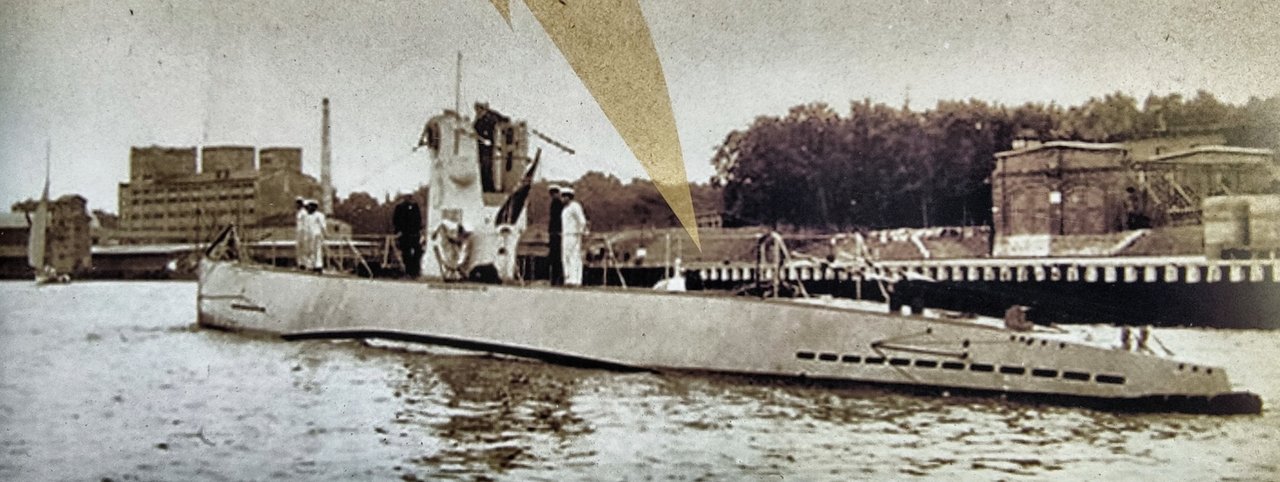 This german submarine has been lost right before Ustka
This german submarine has been lost right before Ustka
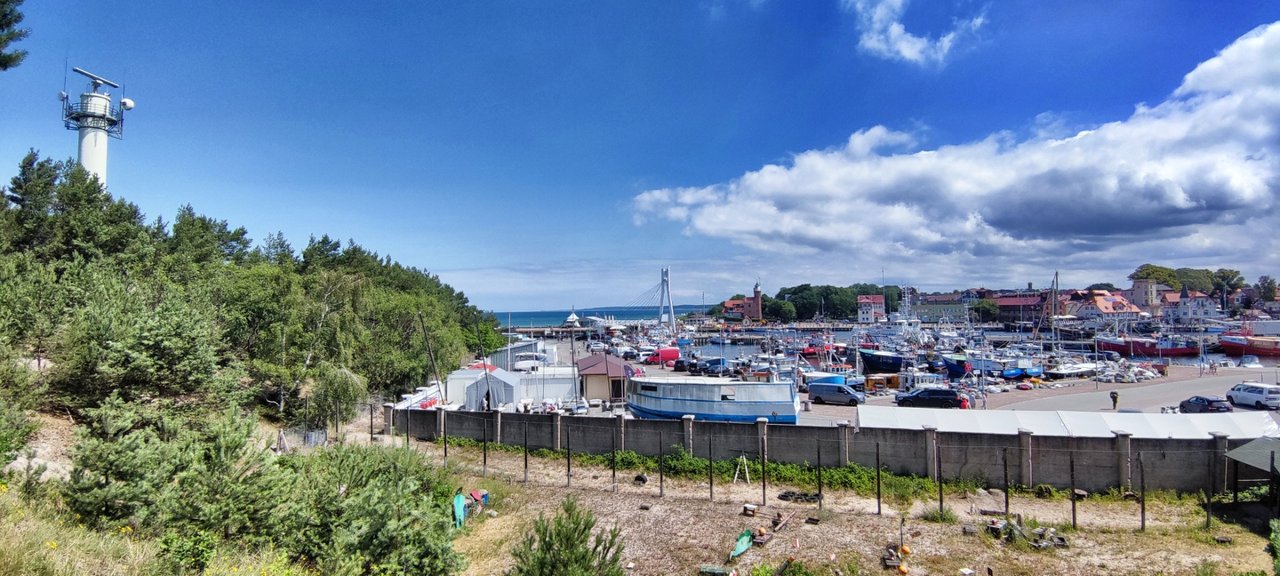 View from the Bunkery to hte harbor
View from the Bunkery to hte harbor
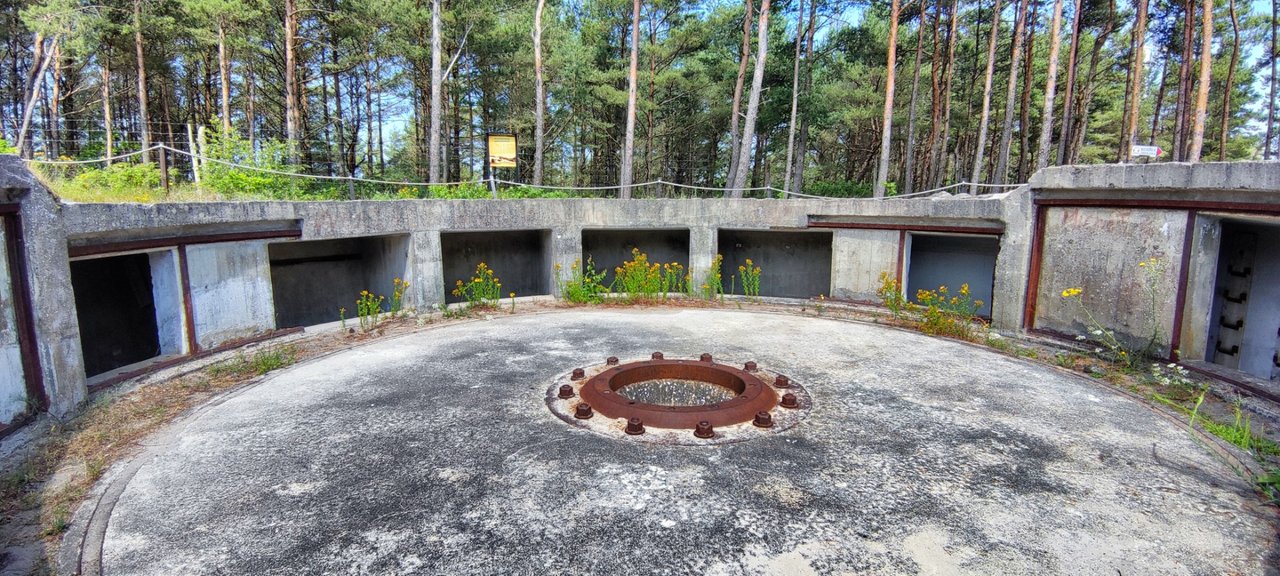 Round view into the gun emblacement
Round view into the gun emblacement
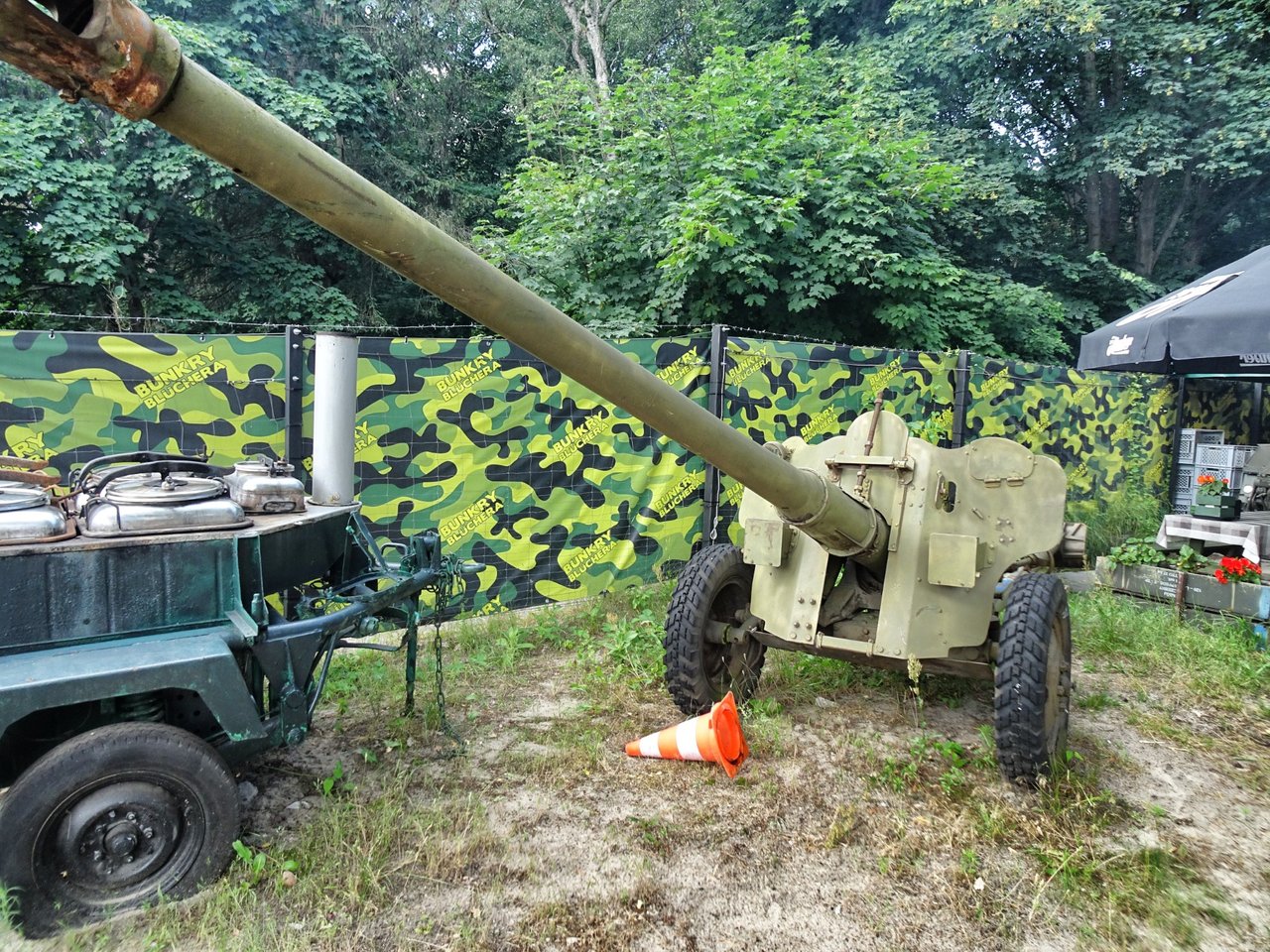 An old cannon on the entree
An old cannon on the entree
